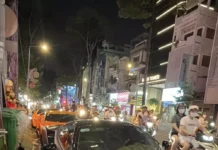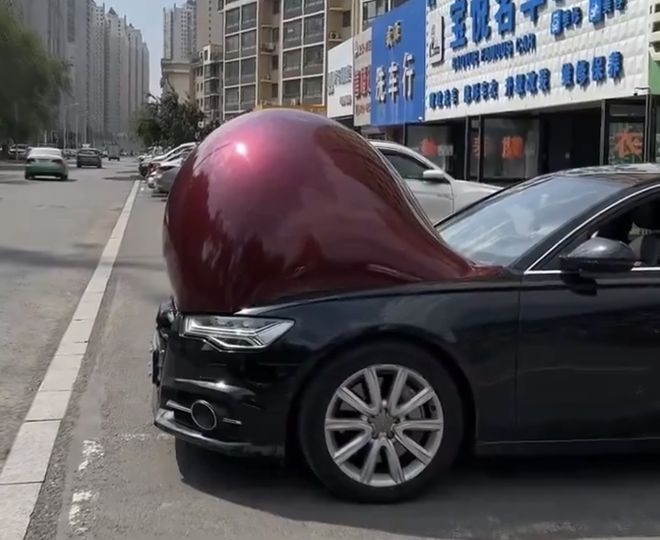Images circulating on Chinese social media platform Weibo have sparked curiosity, as they depict numerous cars with unusual swelling in various parts, especially on the hood, with no apparent cause.
Chinese netizens have humorously dubbed this phenomenon as cars “expecting a baby.”
In mid-April 2024, a BMW 5-Series owner from Hubei province shared a photo of their car, which suddenly swelled up after being parked in the sun. They expressed confusion and worry about whether their car hood would burst open. They are not alone, as other car owners have come forward with similar experiences.
According to Chinese media, this situation occurs when cars with decals are exposed to sunlight and high temperatures. These “bumps” do not affect the car’s technical condition, so vehicle owners need not worry. However, if the swelling obstructs the windshield, it can hinder the driver’s visibility and pose a safety hazard.
Car wrapping involves applying an extremely thin, colored, patterned, or transparent film over a car’s original paint to protect it or for decorative purposes. Additionally, the cost of wrapping a car is significantly lower than repainting it, making car wrapping or decal application a popular choice in many countries, including Vietnam.
The car wrapping process typically involves soaking the car body in soapy water to facilitate the adhesion of the wrap. In some cases, installers also mix in glycerin to slow down the drying time of the soapy water.
Usually, the glycerin evaporates over time. However, if a newly wrapped car with residual glycerin is exposed to high temperatures, the glycerin can expand up to 1,500 times its original volume, resulting in balloon-like bulges on the car’s body.
To prevent this issue, car owners should avoid parking in areas with direct sunlight exposure during peak temperature hours immediately after having their car wrapped. Additionally, they should refrain from parking near sources of high heat, such as grills…
Thai Son (Tuoitrethudo)






























.jpg)
.jpg)














